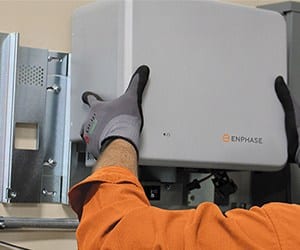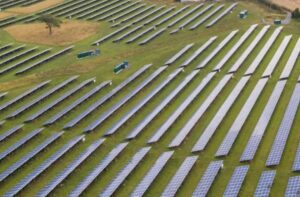 Malcolm Turnbull’s executive order, repeated on Wednesday, to “get on with” energy storage was received by many as a welcome sign of positive energy policy momentum. But the reality is that for much of Australia, the revolution is already well afoot. New research has shown that the nation’s households and businesses are taking to batteries with much the same enthusiasm with which they embraced solar. And at much the same rate.
Malcolm Turnbull’s executive order, repeated on Wednesday, to “get on with” energy storage was received by many as a welcome sign of positive energy policy momentum. But the reality is that for much of Australia, the revolution is already well afoot. New research has shown that the nation’s households and businesses are taking to batteries with much the same enthusiasm with which they embraced solar. And at much the same rate.
In its 2017 Battery Market Report, released to RenewEconomy on Thursday, Australian solar consultancy SunWiz predicts a big year ahead for battery uptake, with market growth expected to treble over the next 12 months, after a 2016 that clocked up 6750 battery installations, or 52MWh – up from 500 in 2015.
To put this in further context, SunWiz notes that that there were 130,000 rooftop solar system installations in 2016, meaning that, effectively, 5 per cent of solar installations included batteries in the past year.
“(This) represents exceptional growth in the Australian battery market, coming off the back of 500 battery installations in 2015,” said SunWiz managing director Warwick Johnston.
“What makes it all the more impressive is that most installations occurred in the latter part of the year, setting up 2017 to be another year of remarkable growth.”
Johnston says SunWiz expects the market to treble in 2017, to a point where 15 per cent of new solar installations will include energy storage. Of those households that already have solar, the report finds that a whopping 70 per cent have plans to add a battery or two.
But we can’t blame Malcolm for being a bit off the mark. According to SunWiz, it took “hundreds of hours of interviews, surveys and research,” to provide achieve transparency into what it describes as “a very opaque market.”
 That said, Turnbull’s claim that the states had neglected to drive battery uptake could be misled, too. SunWiz found that New South Wales was the #1 location for battery installations, with 33 per cent of the installed market, followed closely by Queensland, with 29 per cent.
That said, Turnbull’s claim that the states had neglected to drive battery uptake could be misled, too. SunWiz found that New South Wales was the #1 location for battery installations, with 33 per cent of the installed market, followed closely by Queensland, with 29 per cent.
South Australia, currently with only 10 per cent of national installs, had the most favourable market for battery installations, the report said, with its superior solar resource, high electricity prices, and, ahem, subsidy programs from government, AGL, and SAPN – all of which contribute towards some solar-storage systems having seven-year paybacks before subsidy, says SunWiz.
2016 was also the largest year for larger-scale storage projects, the report finds, noting the 2MWh installation at the Sandfire Copper Mine, the 1.1MWh community installation at Alkimos Beach, and the ACT auction.
But there is still plenty of work to do in the battery storage market, Johnston concedes – a great deal of which will be in education and regulation.
“Our interviews highlighted the storage market is in its infancy and market education is required,” he said.
“Customer expectations of batteries differ markedly from the capabilities and value proposition of most offerings on the market, and salespeople are also caught up in the excitement.
“Batteries aren’t yet a commodity – one size doesn’t fit all and tools such as PVsell can help identify which is the best option for individual customers.”








